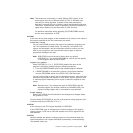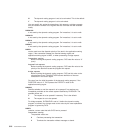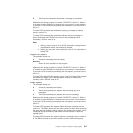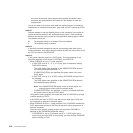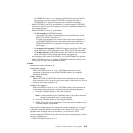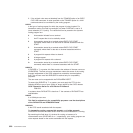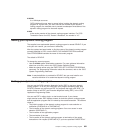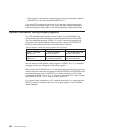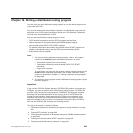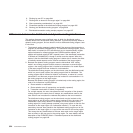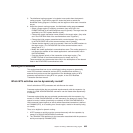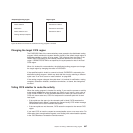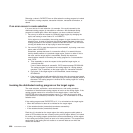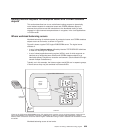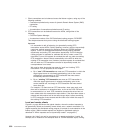
Chapter 18. Writing a distributed routing program
You can write your own distributed routing program or use the default program that
is provided with CICS.
You must be familiar with the principles of dynamic and distributed routing that are
described in the CICS Intercommunication Guide, the CICS Business Transaction
Services, and Java Applications in CICS .
You can use the distributed routing program to route:
v CICS business transaction services (BTS) processes and activities
v Method requests for enterprise beans and CORBA stateless objects
v Non-terminal-related EXEC CICS START requests.
For detailed information about which non-terminal-related START requests are
eligible for distributed routing, see the CICS Intercommunication Guide.
v Inbound Web service requests
Note:
1. You cannot use the distributed routing program—that is, the program
named on the DSRTPGM system initialization parameter—to route:
v Transactions initiated from user terminals
v Transactions initiated by terminal-related EXEC CICS START
commands
v Program-link requests.
To route these, you must use the dynamic routing program named on the
DTRPGM system initialization parameter. How to write a dynamic routing
program is described in Chapter 17, “Writing a dynamic routing program,”
on page 589.
2. The dynamic routing program and the distributed routing program may be
the same program.
Important
If you use the CICSPlex System Manager (CICSPlex SM) product to manage your
CICSplex, you may not need to write a distributed routing program. CICSPlex SM
provides a fully-functioning routing program, EYU9XLOP, that supports workload
balancing and workload separation. All you have to do is to tell CICSPlex SM,
through its user interface, which regions in the CICSplex can participate in the
workload, and define any transaction affinities that govern the regions to which
particular requests must be routed. For introductory information about CICSPlex
SM, see the CICSPlex SM Concepts and Planning manual.
The rest of the section is divided as follows:
1. “Differences between the distributed and dynamic routing interfaces” on page
624
2. “Routing BTS activities” on page 625
3. “Routing method requests for enterprise beans and CORBA stateless objects”
on page 629
4. “Routing non-terminal-related START requests” on page 637
5. “Routing inbound Web service requests” on page 641
© Copyright IBM Corp. 1977, 2011 623



